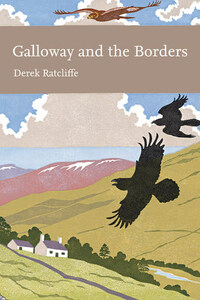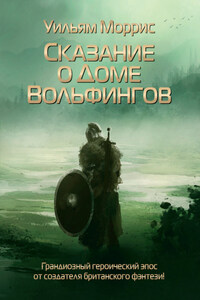SARAH A. CORBET, SCD
PROF. RICHARD WEST, SCD, FRS, FGS
DAVID STREETER, FIBIOL
JIM FLEGG, OBE, FIHORT
The aim of this series is to interest the general reader in the wildlife of Britain by recapturing the enquiring spirit of the old naturalists. The editors believe that the natural pride of the British public in the native flora and fauna, to which must be added concern for their conservation, is best fostered by maintaining a high standard of accuracy combined with clarity of exposition in presenting the results of modern scientific research.
Good prose is like a window pane
George Orwell, Why I Write
Derek Ratcliffe had a photographic memory of most of Britain, and certainly of the uplands. Name a location, and he could describe the habitats, the intricacies of their ecology, and especially the birdlife. He was an acute observer, with an enthusiasm for wild, open areas combined with a natural curiosity and an ability to think laterally. His industry and energy were remarkable, driven by a thirst for knowledge, an urge to understand what was happening around him, and the ability to reveal to others with straightforward clarity the hidden wonders of the natural world.
Born in London on 9 July 1929, Derek grew up in Carlisle, where he developed a keen interest in nature. His first step on the literary ladder was a school essay on peregrines and ravens for which he won a prize at Carlisle Grammar. As he describes in the New Naturalist Lakeland: the wildlife of Cumbria (2002), his parents âmade the wonderful decision to move from London to Carlisle when I was nine years old, and so paved the way for the eventual appearance of this book.â Indeed, that move was a blessing, for it has now also given us Galloway and the Borders, which is both a lament for the wealth of nature lost in our lifetimes and a celebration of one of Britainâs neglected landscapes. In addition to writing these two volumes for the series, Derek was an enthusiastic supporter of the New Naturalist library, and a series editor for twelve years.
During six decades, from his early encounters with wildlife through to difficult and strained relations with politicians and senior civil servants, Derek always wrote lucidly about nature. He was one of the most distinguished conservationists in Britain, featuring once in The Sunday Times as one of the hundred people who had most influenced the twentieth century. He retired in 1989 as Chief Scientist of the Nature Conservancy Council (NCC), but went on to write several more books and articles. His publications list is unique for the breadth of subjects in which he had expert knowledge. Derek devised the modern framework for nature conservation in A Nature Conservation Review (1977), which he edited and largely wrote. He made the key discovery about the link between pesticides and eggshell thinning in raptors, producing in 1967 a paper in the prestigious scientific journal Nature which became what is now known as a âcitation classicâ. Later, he published two classic bird monographs, The Peregrine Falcon (1980, 1993) and The Raven (1997), and a highly original book on Bird Life of Mountain and Upland (1990).
As a botanist, having taken his PhD on mountain vegetation at the University of Wales in Bangor, Derek went on to pioneer (with Donald McVean) the description and classification of upland vegetation in the Scottish Highlands, published in Plant Communities of the Scottish Highlands (1962). Later, he made pioneering studies of bryophytes, peatlands and mountain plants. He loved to write about his travels and experiences, and captured these first in Highland Flora (1977), later in his memoir of early years in the field, In Search of Nature (2000), and finally in the superbly illustrated book about his travels with his wife Jeannette in the far north of Europe, Lapland: a natural history (2005). Derek also wrote scientific papers, book chapters and articles which all had the hallmark of first-hand observation, clear analysis and fluent writing. Many of his photographs appear in his books, and even some of these have become conservation icons, such as the wave of conifers breaking over the uplands of Kirkcudbrightshire, Rannoch Moor with its pine stumps exposed, dotterel nesting on a Lakeland fell, and the great beeches of the New Forest.








